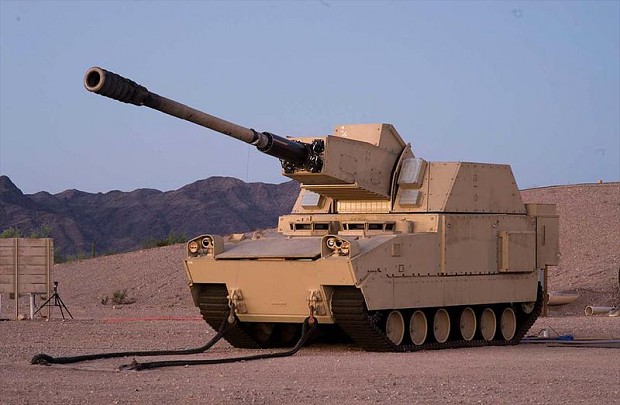Artillery Lovers Group
Hobbies & Interests
Originally applied to any group of infantry primarily armed with projectile weapons, artillery has over time become limited in meaning to refer only to those engines of war that operate by projection of munitions far beyond the range of effect of personal weapons. These engines comprise specialised devices which use some form of stored energy to operate, whether mechanical, chemical, or electromagnetic. Originally designed to breach fortifications, they have evolved from nearly static installations intended to reduce a single obstacle to highly mobile weapons of great flexibility in which now reposes the greater portion of a modern army's offensive capabilities.
Non-line-of-sight cannon
XM1203 Non-Line-of-Sight Cannon (NLOS-C) prototype in 2009
The XM1203 Non-Line-of-Sight Cannon (NLOS Cannon) was a mobile 155 mm cannon intended to provide improved responsiveness and lethality to the "unit of action" (UA) commander as part of the US Army's Future Combat Systems project. This self-propelled armored artillery piece provides networked, extended-range targeting, and precision attack of point and area targets in support of other combat units with a suite of munitions that include special purpose capabilities. The Non-Line-of-Sight Cannon provides sustained fire for close support and destructive fire for tactical standoff engagement. The NLOS Cannon uses technology from the canceled XM2001 Crusader.
NLOS-C was a proposed system in development to be part of the FCS environment and funded by the U.S. Congress shortly after cancellation of the XM2001 Crusader M109 replacement. It is an 18-ton class vehicle that would have been a replacement for current vehicle systems in the 40-60 ton weight class. It would provide a level of air transportability that current M109 systems cannot at present match.
The system's primary purpose is to provide responsive fire in support of the FCS Combined Arms Battalions (CABs), and their subordinate units in concert with line-of-sight, Beyond-Line-of-Sight (BLOS), Non-Line-of-Sight (NLOS), external and Joint capabilities.
The system as proposed looks to add capabilities that the current M109 systems do not offer. One of the proposed systems advantages is the ability to switch shell types quickly on a one by one basis allowing an illumination round to be followed by a point detonation round, to be followed by an area effect round. This would give the system the ability to fire different rounds as required by different fire calls or to change types of shells. For instance, destroying a building then engaging anyone fleeing the area with the next round.







The Most Beautiful Howitzer EVER. It looks sturdy like it could take a hit too ;D.
True , See En.wikipedia.org
it is a program for new units for the future , looks promising .
Blog.naver.com
i dont think this vechile can fit in hot combat with mounted weapons i see in wikipedia, but truly good for artillery vechiles
recommended weapon systems: mortar and howitzer